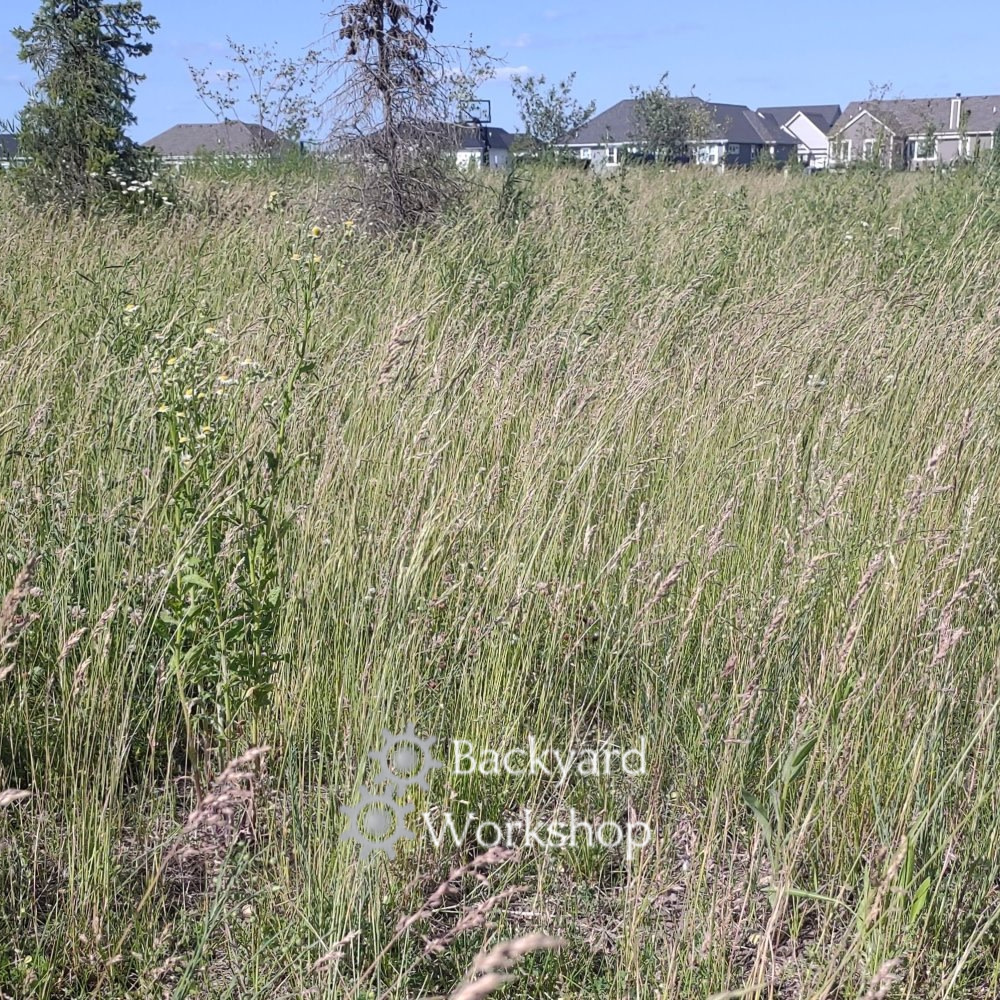High Wheel Vs. Low Wheel Lawn Mower – What’s Better?

You have heard the terms high wheel and low wheel mowers, but you aren’t sure what they mean. Are they important?
Should you even care?
I’ve cut lawns for almost 40 years now – with all types of mowers.
And yes, there is a difference between a high-wheel and a low-wheel mower – but you’d only care if you have a certain type of lawn.
What Is The Difference?
Here’s the physical difference between low-wheel and high wheel mowers. The tires on a low wheel model are uniform. However, high wheel mowers have larger rear wheels- usually nine to twelve-inch diameters- that provide both benefits and disadvantages.
So which is superior, a low or high-wheel lawn mower? The answer depends mainly on your lawns.
Reasons to Use High Wheel Mower
High wheel mowers have larger rear wheels allowing the machine to trim vast yard areas quickly. High wheel mowers aren’t ideal for every condition. However, the machines are perfect for the below requirements.
Hills and banks
Because of their greater diameter, large rear wheels cover a greater area than low wheel mowers with the same applied effort.
Mowing inclines safely is challenging enough. A high rear wheel mower minimizes your efforts and makes trimming hills easier. A self-propelled lawn mower is your best bet for clipping steep hills.
Push mowers with larger rear wheels maneuver embankments better and more safely than riding mowers or low-wheel push mowers.
Difficult Terrain
High rear wheels move smoothly over uneven terrain. Because the diameter is larger, the wheels don’t get stuck on or in:
- Gopher holes
- Gullies
- Divots,
- Rocks
- Roots that would hinder a small wheeled mower
Mowers with smaller wheels get caught on rough terrain. As a result, the tires get stuck in divots, bringing the blade too close to your grass and scalping your yard.
Better Bag Support
Certain mowers have grass collectors in the back. These bags collect the lawn clippings as you mow and get heavier as they fill—the heavy loads push the bg down and scrape against the ground. High rear wheels lift the load, giving it wider clearance from the ground as the collector fills.
Very High Grass
High rear-wheel mowers allow you to take off smaller amounts of tall grass at a time than low wheeled trimmers.
Lawn care experts suggest homeowners follow the ⅓ rule. According to this edict, you should only remove a third of your grass’s length at a time. Keeping your grass relatively long means you need to mow more frequently. However, it’s advantageous to the health of your lawn.
Higher grass grows deeper roots that sustain your yard during dry spells. The shade provided by tall grass also protects roots and conserves ground moisture.

However, If your grass has grown exceptionally high, this rule is hard to follow with low-wheeled mowers. The height of the rear wheels partially determines the location of your mower blade, and the height of the blade dictates the length of your grass.
High Wheel Mower Disadvantages
The speed and efficiency of a larger tire mower appeal to any lawn caregiver. However, these mowers aren’t suited for every yard or purpose.
Turns are Difficult
The engines in gas-powered models of a high-wheel gas mower are located near the front. The deck is heavier, as a result, making tight turns far more complex.
Wide turns are manageable. However, if your lawn size makes larger turns difficult, you’ll need to lift the front of the mower.
High Wheel Mowers Cost More
High-wheel mowers are more expensive than low-wheel mowers. The cost differential isn’t astronomical and is worth the price if your lawn fits specific criteria. Consider paying the extra twenty to forty dollars if your yard is uneven, has hills or inclines, or has rough terrain.
However, save your money if you have a flat, level yard as the smaller wheels work fine.
Front Wheel, Rear Wheel, or All Wheel Drive
A self-propelled mower of any wheel size comes with either front, rear, or all-wheel drive. A self-propelled system helps you move the machine. The impact of wheel size can be significantly impacted by what propulsion system your mower uses.
Front-Wheel Drive Mowers
Front-wheel drive works best on uneven terrain. These mowers steer and stop abruptly better than rear-wheel drive models. In addition, you can pull front-wheel drive mowers backward easily.
Best on flat surfaces, these machines are not suitable for lawns with:
- Hills
- Valleys
- Inclines
Front-wheel drive mowers have excellent traction on lawns with many turns and twists. As a result, they are the most affordable options.
Rear Wheel Drive Mowers
Rear-wheel drive mowers roll over any terrain. These trimmers are blunt instruments that work best on vast, open lawns but lack the precision of a front-wheel-drive mower. However, rear-wheel-drive models maneuver hills and inclines with ease.
These mowers have superior traction and are more expensive than a front-wheel drive mower but cheaper than all-wheel drive trimmers.
All Wheel Drive Mowers
All-wheel drive mowers have excellent traction on wet grass and rough terrain. They also manage hills and slopes capably. However, the price is the most significant drawback to an all-wheel drive mower.
Which Is Right for Me?
Your backyard largely dictates what type of tool is the best mower for you.
High rear-wheel mowers work well for lawns with steep hills and inclines. The larger wheel size covers a greater area with less effort, which is hugely beneficial for a push mower.
If your mower features a clipping bag, high rear wheels allow them to hold more grass clippings. If your bag holds more grass, you’ll need to empty it less, which will enable you to finish the job faster.
If you can’t mow regularly for whatever reason, a high wheel model allows you to cut your grass in reasonable measures.
Low-wheel mowers are less expensive, so buyers on a limited budget are preferable.
The cheaper, small wheel models turn more easily, so if you have a flat, even lawn, don’t bother with the extra expense.
If you don’t bag clippings, you don’t need high rear wheels to elevate the sack. In that case, you can stick to a lower-wheeled model.
Conclusion
Customizing the wheel size on your lawn mower and picking an appropriate propelling method can significantly improve your lawn and mowing experience. You need to know what’s best for you. Feel free to leave questions and comments below.






